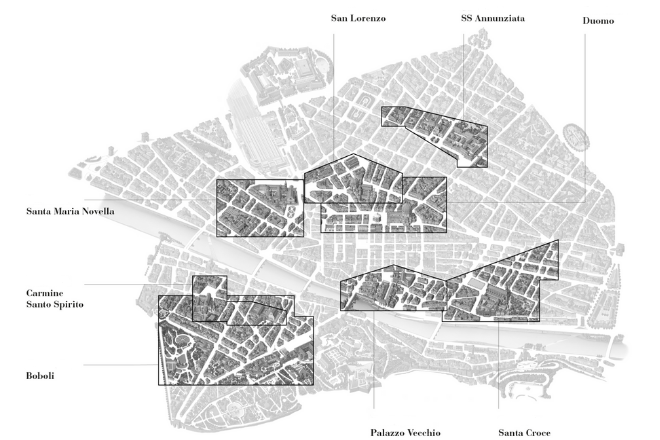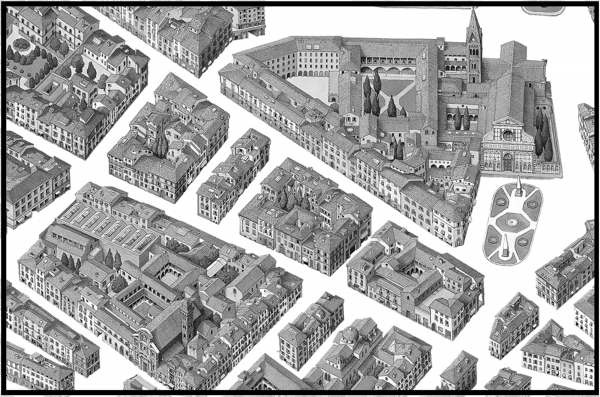Book your stay
La Fattoria
Weddings
-
Book your stay
Book your stay
- La Fattoria
-
Weddings
Weddings
- Farm
- Contact
All of Casolese’s rooms are decorated in a fresh and understated style, but they all have an element that sets them apart; illustrations by the artist Simone Boni that confer on each room its own unique character.
The artist has faithfully transposed a map of Florence onto designer wall-coverings, and we have selected representations of 8 different areas of the city, one for each bedroom.
With the precise transfer of his design onto vinyl , it became possible to create a wallpaper with clean graphic lines that was truly a work of art.
The leitmotiv of the rooms is the history of Florence itself, and each room will tell its own story, springing from the symbolic monuments that characterise each district of the city, from the great dome of the Duomo to the Liberty-inspired marketplace of San Lorenzo, passing through the Boboli Gardens and arriving at Piazza Santa Maria del Carmine.
A short historical explanation will help you to identify the monuments and the streets depicted in your room. Today we will write about Santa Maria Novella.

SANTA MARIA NOVELLA
At the end of the 13th century work started on restoring a small religious building just outside the city walls, Santa Maria delle Vigne. The church had belonged to the Dominicans since 1221, and it soon became a building site as the order began work following the plans of two of its own architects, Fra Ristoro and Fra Sisto.
The work lasted two centuries and was completed by the architect Leon Battista Alberti, who finished the facade in 1470. Michelangelo so loved the church, renamed Santa Maria Novella, that he referred to it as “my fiancee”. The church gives its name to the square in front of it and to Florence’s nearby railway station. In a building which once was part of the church complex, on Via della Scala, is the Officina Profumo-Farmaceutica di Santa Maria Novella, which has been making lotions and skin products since 1612.
Still in this area, at Via Il Prato 58, is one of the prettiest gardens of Florence, the Corsini garden. It is part of the Palazzo Corsini al Prato (not to be confused with Palazzo Corsini on the Lungarno). Every year there is an exhibition called Artigianato e Palazzo (handicraft and palace), which is a great opportunity to visit the garden and discover forgotten handicrafts and skills.

AN INTERESTING FACT
Inside Santa Maria Novella’s refectory there is a work by a female artist: “The Last Supper”, by Sister Plautilla Nelli (1524-1588). Sister Plautilla is the earliest Florentine woman artist whose works have survived.
It is believed that her male saints appear extremely ‘female’ because she had never seen a man’s naked body. The apostles in her “Last Supper”, painted for her convent, certainly have very womanly faces. The author Vincenzo Fortunato Marchese writes that “It is said that when Suor Plautilla needed to study a nude in order to depict the body of Christ, she had to make do with that of a nun who had died. The other nuns jokingly used to say that it was because of this that, instead of painting Christs, she painted ‘Christesses’.